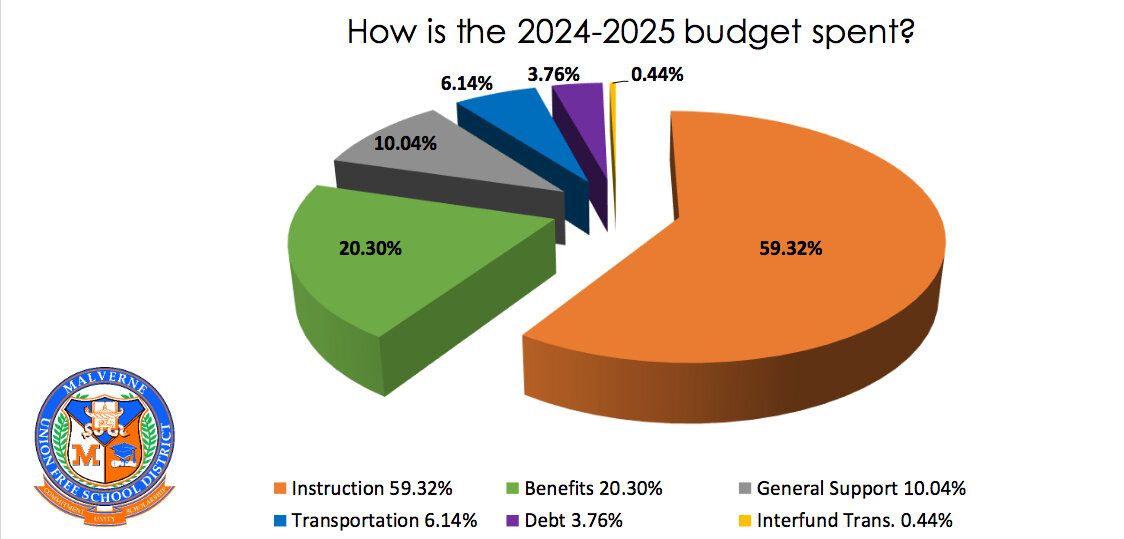School budget season brings new obstacles
The Malverne and West Hempstead school districts are gearing up for their budget and Board of Education votes next Tuesday. The spending plans for the 2024-25 school year are the first to grapple with the end of state and federal coronavirus pandemic funding — but administrators in both districts believe that by being fiscally conservative, they’ll be able to make their budgets work.
Malverne
The lack of state funding — pandemic-related and otherwise — that Malverne is seeing is a last-minute switch from Gov. Kathy Hochul, Lorna Lewis, Malverne’s superintendent, said.
“We did not get the allocation that had been anticipated if the governor had followed the foundation aid formula,” Lewis said. “We are grateful for what we have — there are other districts that have cuts. We did not have a cut. But if the foundation aid formula was applied, we would have had $200,000 more.”
But administrators say they saw a dip in revenue coming from a mile away. Over the past few years, they have been building into their budgets the programs and staff they originally added with the help of Covid aid.
“For example, we added a social worker, which (was) so vitally needed during Covid,” Lewis said. “We continue to see those learning losses, social emotional losses. We knew that we needed to keep that person in our budget … so once those funds disappeared, we had those built internally in our budget, so we didn’t lose that altogether.”
The problem for many teachers and administrators is that although schools are no longer receiving pandemic aid, they are still facing pandemic-related problems. The youngest students have been hit particularly hard. “Particularly those kids who had kindergarten at home,” Lewis said. “The formation of letters, the sounds associated with how you form your letters, your tone and all that. They missed out on that for two years, and we’re seeing that effect. Those kids are now third-graders.”
“That’s why we have to put extra resources in K-through-4,” she added. “To make sure that we continue to address the learning gaps that Covid brought on.”
Malverne is expanding its literacy program for kindergarten through fourth grades. That, too, is a program it originally began with Covid money and has since been worked into the budget.
The district also plans to use funds from its capital reserves to upgrade the Howard T. Herber auditorium, school doors, restrooms and maintenance vehicles. Those expenditures will come at no additional cost to taxpayers.
“Everyone should be involved in analyzing and making a determination as to whether they need to support our budget,” Lewis said. “This budget is for children, whether public or private schools.”
The vote will take place on Tuesday from 7 a.m. to 9 p.m. in the gym at Howard T. Herber Middle School.
West Hempstead
Only two of the more than 120 school districts on Long Island saw their budgets initially rejected by voters last year — Wainscott, a small district near the tip of the South Fork, and West Hempstead. And for West Hempstead, it happened for the second year in a row.
The district spending plan passed on the second vote, so students and teachers weren’t subjected to a bare-bones contingency budget. But district officials are hopeful for approval the first time around that this year.
“I’m confident that the community is going to come out and support this budget,” West Hempstead Superintendent Daniel Rehman said. “A contingency budget would mean another approximately $1 million in cuts.”
Rising health care and transportation costs — by just over $1.2 million in each category — forced the elimination of nine staff positions across the district.
“We have to look at the long-term financial stability of our district, and continue to provide the best possible education for our students,” Rehman said. “We have students at the forefront, but we have to be responsible to taxpayers as well.”
The district’s fiscally responsible approach has resulted in a spending with the least impact on taxpayers, he said. The tax levy increase of 2.34 percent is below average for Nassau County.
Though the budget remains lean, there is still plenty coming in 2024-25 that administrators are excited about. The district has received a Stronger Connections grant, from the State Education Department, to aid students who are struggling developmentally. West Hempstead has also begun a Career and Technical Education program, which will help students get a head start on careers in hospitality and tourism, food and nutrition, marketing and financial management.
And although it has lost Covid aid, the district’s internal assessment showed that student academic performance — which had been rising steadily for years — is officially back to pre-pandemic levels. A decade ago, the graduation rate was above 80 percent. Today it’s well above 90 percent. Reading and writing scores continue to improve each year. And the only way to maintain that forward momentum, administrators remind district voters, is if students continue to have access to resources enabled by the school budget.
“If someone is going out just voting for zero percent increases, that’s going to irreparably harm public school here,” Rehman said. “A zero would absolutely destroy the work we’re doing and the education that students receive.”
The schools’ job is to “create programs so every kid can find their way,” he added.
The budget vote will take place from 7 a.m. to 9 p.m. on Tuesday in the north gymnasium of West Hempstead Secondary School.






